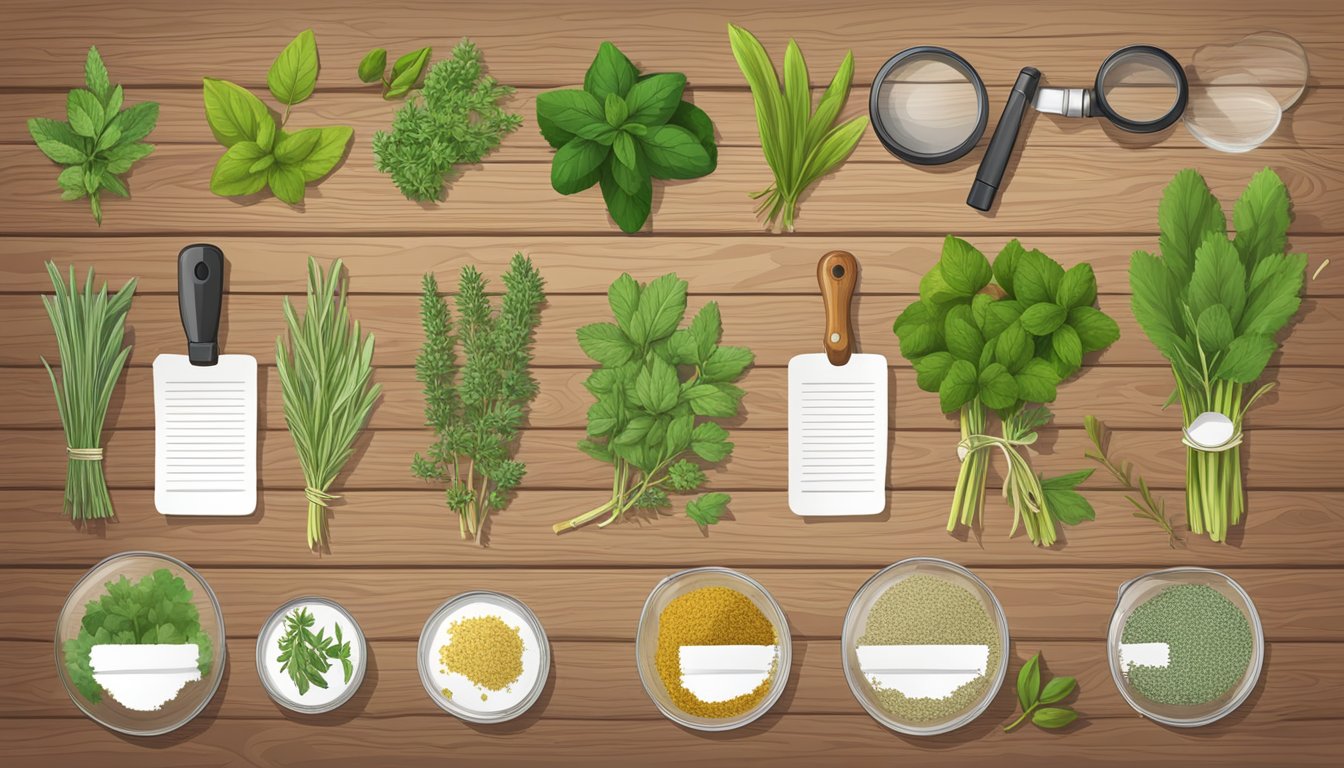TheHerbProf.com is a treasure trove of knowledge for those interested in natural healing and herbal remedies. The website is run by Paul Johnston MD. A naturopathic who has not only received extensive education in the field but also has personal experience in self-healing.
Herb identification is a vital ability for anyone who is keen on gardening or cooking with fresh herbs. Being able to identify herbs visually is key to making sure you’re using the appropriate herb in your recipe or planting the right herb in your garden. Given the wide variety of herbs out there, it can be difficult to tell one from another, particularly if you’re a novice in gardening or cooking.
Fortunately, there are several ways to identify herbs, including by their leaves, flowers, and scent. Many herbs have distinctive leaves that can help you identify them, such as basil’s large, glossy leaves or rosemary’s needle-like leaves. Flowers can also be a helpful identifier, with some herbs, like lavender, having unique and recognizable flowers. Finally, the scent of an herb can be a dead giveaway, with herbs like mint and thyme having a strong and distinct aroma. By using these identifying factors, you can quickly learn to distinguish between different herbs and become a pro at herb identification.
Identifying Herbs: Visual Guide
As an avid gardener, I have come across many different types of herbs. Sometimes it can be difficult to identify them, especially if they look similar. In this section, I will provide a visual guide to help you identify herbs with ease.
Identification Characteristics (Leaf, Flower, Scent)
The most common way to identify herbs is by looking at their leaves, flowers, and scent. Each herb has unique characteristics that can help you differentiate it from others.
Leaves
Herb leaves come in different shapes, colors, and textures. For example, basil leaves are green and smooth, while rosemary leaves are grayish-green and needle-like. Some herbs, like mint, have a distinct aroma that comes from their leaves. By examining the shape, size, and texture of the leaves, you can identify the herb.
Flowers
Herbs also have different types of flowers. For example, chamomile has small, daisy-like flowers, while lavender has long, slender flowers. The color and shape of the flowers can help you identify the herb.
Scent
The aroma of an herb can also help you identify it. For example, thyme has a strong, earthy scent, while sage has a warm, spicy scent. By smelling the herb, you can get a sense of what it is.
Herb Leaf Identification Web & App Solutions
If you’re still having trouble identifying an herb, there are many web and app solutions that can help. For example, the PlantIn identifier is a straightforward method of herb plant identification. By examining the stem and other identification characteristics, you can identify the herb.
Do You Know Your Culinary Herbs? Herb Identification Chart + Benefits
Knowing your culinary herbs is essential if you want to cook with them. An herb identification chart can help you identify different herbs and their benefits. For example, basil is a good source of vitamin K, while thyme is a good source of vitamin C. By knowing the benefits of each herb, you can make informed choices when cooking.
Identifying herbs can be challenging, but with the right tools and knowledge, it can be done. By examining the leaves, flowers, and scent of an herb, you can identify it with ease. If you’re still having trouble, there are many web and app solutions that can help.
Popular Herbs and Their Characteristics
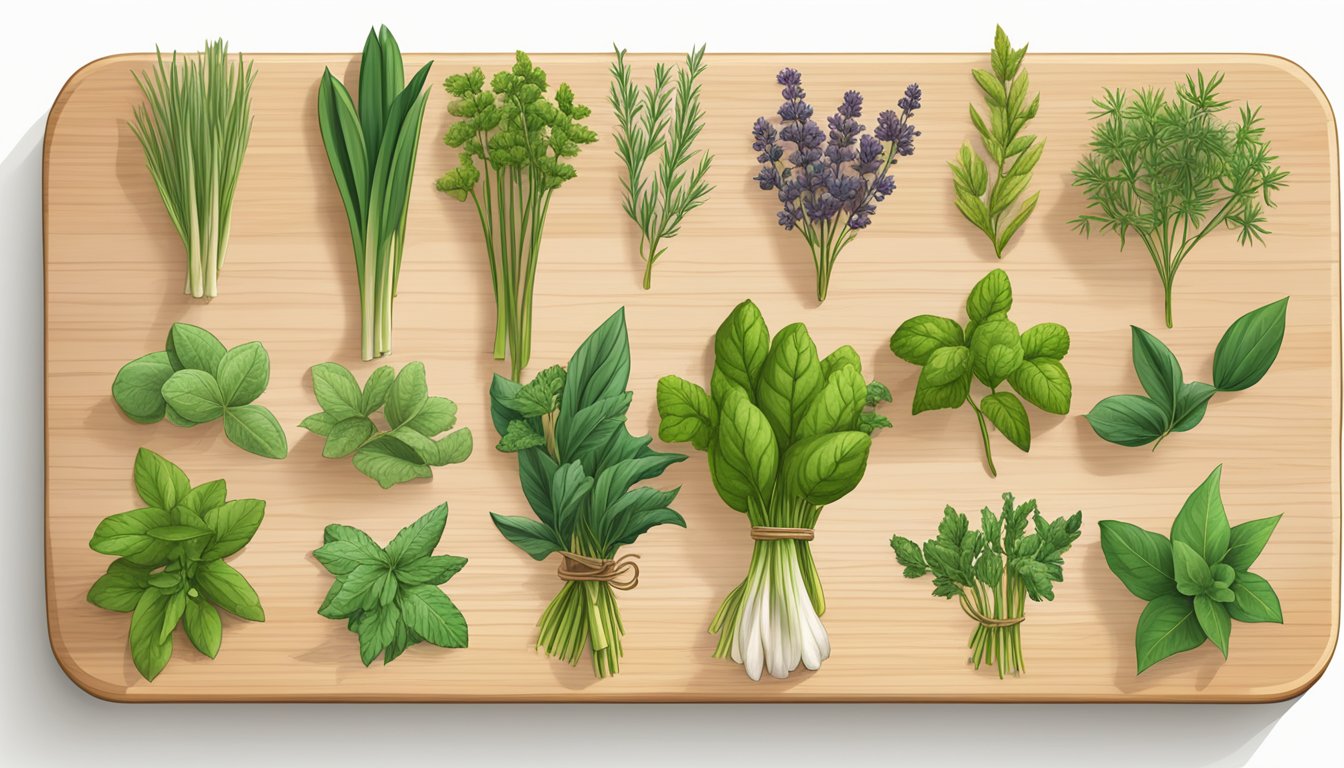
As an herb enthusiast, I find it fascinating to learn about the unique characteristics of different herbs. Here are some of the most popular herbs and what makes them stand out:
Basil
Basil is a highly aromatic herb that is commonly used in Italian cuisine. It has a sweet and slightly peppery taste with a hint of lemon. There are many different species of basil, including purple basil and lemon basil. Basil is an annual herb, which means it needs to be replanted each year.
Oregano and Marjoram
Oregano and marjoram are very similar herbs, and they are often used interchangeably. However, oregano has a stronger flavor and aroma than marjoram. Both herbs have a slightly bitter taste and are commonly used in Mediterranean cuisine. Oregano and marjoram are both perennials, which means they will come back year after year.
Mint
Mint is a refreshing herb that is often used in teas and desserts. It has a bright, cool flavor with a slightly sweet taste. There are many different species of mint, including peppermint and spearmint. Mint is a perennial herb that can be quite invasive, so it’s best to plant it in a container.
Parsley
Parsley is a versatile herb that is commonly used as a garnish. It has a mild, grassy flavor and is often used in Mediterranean and Middle Eastern cuisine. Parsley is a biennial herb, which means it will come back every other year.
Sage
Sage is a pungent herb that is commonly used in stuffing and other savory dishes. It has a slightly bitter taste with a hint of lemon. Sage is a perennial herb that can grow quite large, so it’s best to give it plenty of space in the garden.
Tarragon, Rosemary and Lavender
Tarragon, rosemary, and lavender are all aromatic herbs that are commonly used in French cuisine. It has a sweet, anise-like flavor, while rosemary has a pine-like flavor. Lavender has a floral taste and is often used in desserts. Tarragon is a perennial herb, while rosemary and lavender are both shrubs.
Thyme and Dill
Thyme and dill are both aromatic herbs that are commonly used in Mediterranean and Scandinavian cuisine, respectively. It has a slightly sweet taste with a hint of lemon, while dill has a slightly sweet and tangy taste. Thyme is a perennial herb, while dill is an annual herb.
These herbs are just a few examples of the vast world of herbs and their unique characteristics. Each herb has its own flavor, aroma, and appearance, making them a great addition to any dish.
How to Store and Preserve Herbs
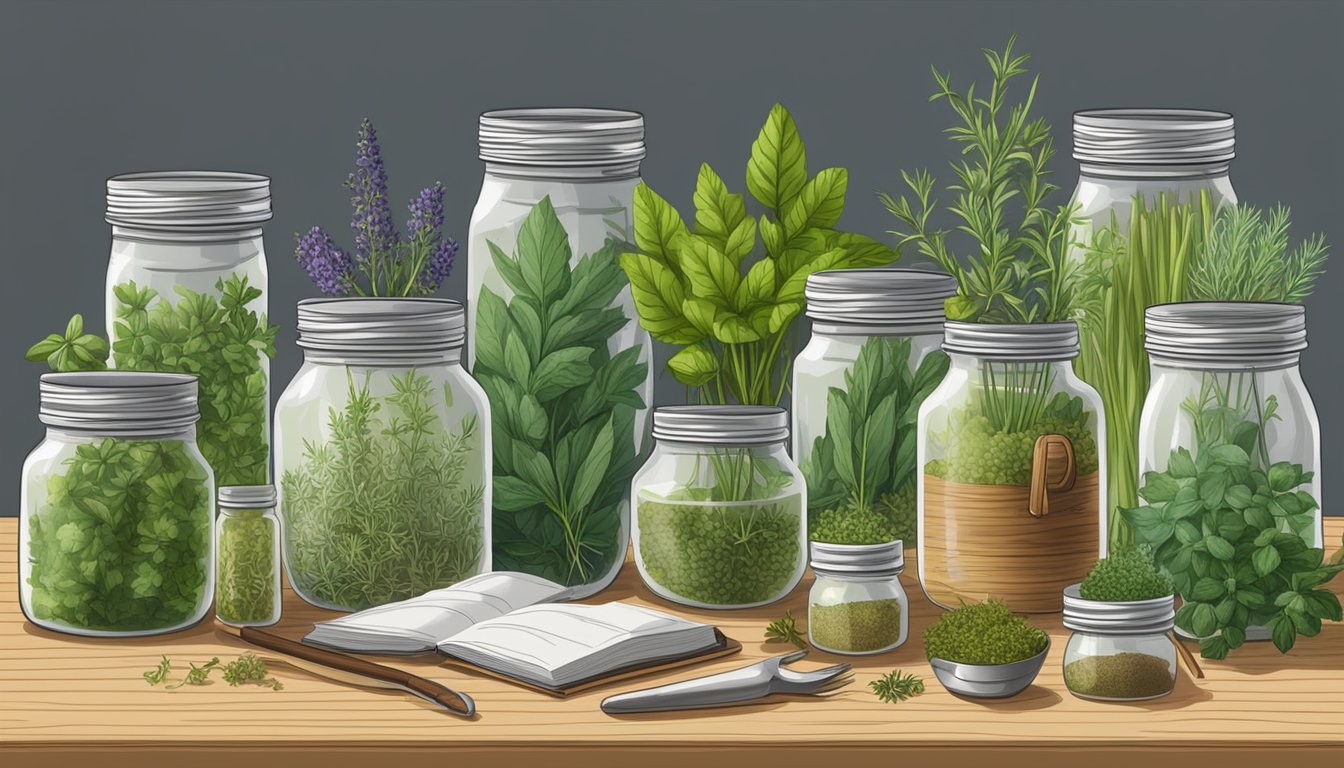
As an herb enthusiast, I know how important it is to store and preserve herbs properly to retain their flavor and aroma. In this section, I will share some tips on how to store and preserve your herbs for long-term use.
Proper Storage Methods
The first step to proper herb storage is to ensure that the herbs are clean and dry. You can rinse the herbs under cold running water and pat them dry with a paper towel. Avoid washing them too much as it can lead to mold growth.
After cleaning the herbs, you can store them in airtight containers such as glass jars or plastic containers. You can also use resealable plastic bags to store the herbs. Make sure to label the containers with the name of the herb and the date of storage.
Another important factor to consider when storing herbs is the temperature. Herbs should be stored in a cool, dry place away from direct sunlight. Sunlight can cause the herbs to lose their flavor and aroma.
Shelf Life of Dried Herbs
Drying is one of the most popular methods of preserving herbs. Dried herbs can last for up to a year if stored properly. To dry herbs, you can hang them upside down in a warm, dry place with good air circulation. Alternatively, you can dry them in a dehydrator or oven.
Once the herbs are dry, you can store them in airtight containers. You can also crush the dried herbs to release their flavor and aroma before storing them.
It is important to note that the shelf life of dried herbs can vary depending on the herb. Some herbs like bay leaves and whole spices can last for up to two years, while others like basil and parsley can last for up to a year.
Proper herb storage and preservation can help you enjoy the flavor and aroma of your herbs for a long time. By following the tips mentioned above, you can ensure that your herbs remain fresh and flavorful for all your culinary needs.
Additional Resources for Herb Identification
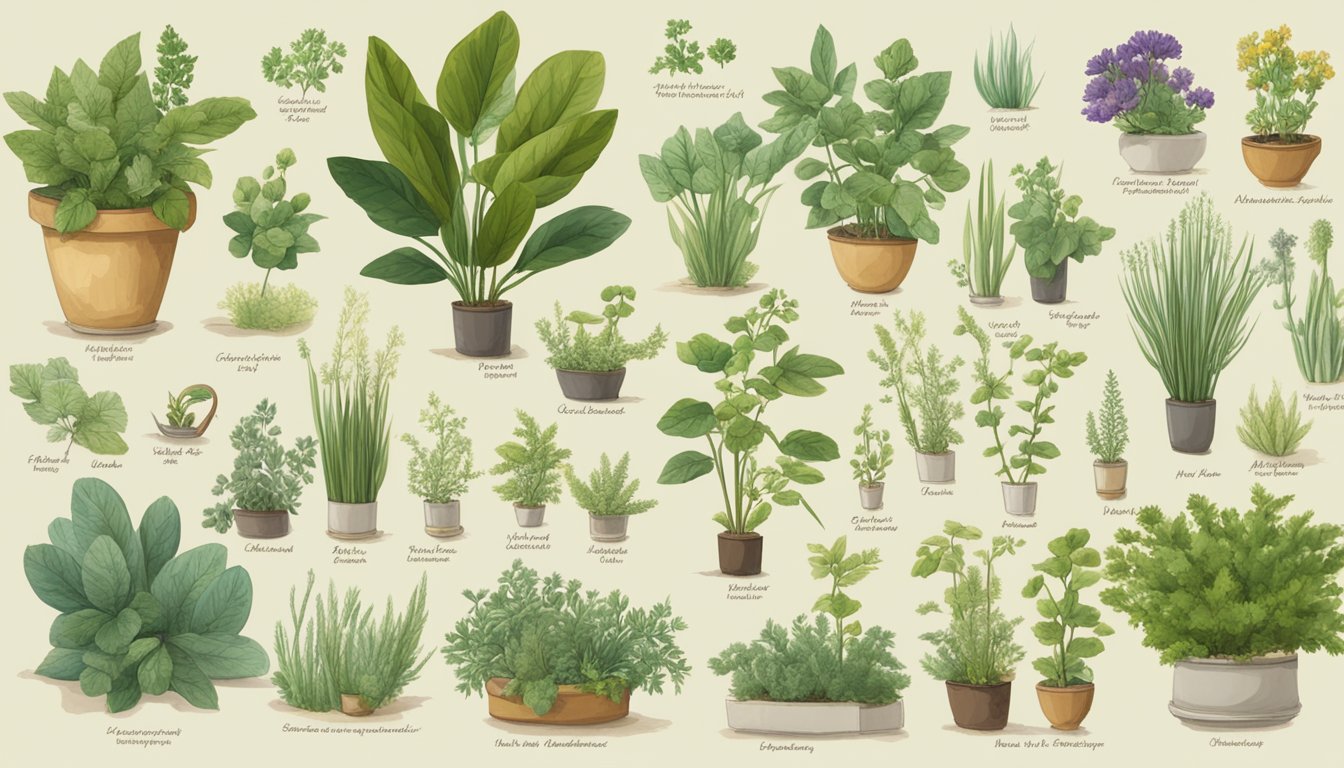
Identifying herbs can be a challenging task, especially if you are a beginner. Luckily, there are many resources available to help you learn how to identify herbs. Here are some additional resources that you can use to help you identify herbs:
Online and App Solutions
There are many online resources and apps available that can help you identify herbs. Some of the most popular ones include:
- PlantSnap – PlantSnap is an app that uses image recognition technology to help you identify plants and herbs. All you have to do is take a picture of the herb, and the app will identify it for you.
- iNaturalist – iNaturalist is an online community of naturalists, scientists, and citizens who record observations of plants and animals. You can use the website or app to identify herbs by uploading a picture and asking for help from the community.
- HerbMentor – HerbMentor is an online learning platform that offers courses on herbalism, including herb identification. The platform also includes a forum where you can ask questions and get help identifying herbs.
Herb Identification Books
There are many books available that can help you learn how to identify herbs. Some of the most popular ones include:
- The Complete Illustrated Guide to Herbs by Reader’s Digest – This book includes over 700 herbs and their uses, as well as detailed information on how to identify them.
- The Herbal Medicine-Maker’s Handbook: A Home Manual by James Green – This book includes information on how to identify herbs, as well as how to make your own herbal medicines.
- The Herb Society of America’s Essential Guide to Growing and Cooking with Herbs by Katherine Schlosser – This book includes information on how to identify herbs, as well as how to grow and cook with them.
Community Forums and Discussions
Joining a community forum or discussion group can be a great way to get help identifying herbs. Some of the most popular ones include:
- The Herb Society of America – The Herb Society of America is a non-profit organization dedicated to promoting the knowledge, use, and delight of herbs. The society offers a forum where members can ask questions and get help identifying herbs.
- Reddit’s r/herbs – Reddit’s r/herbs is a community forum where members can ask questions, share information, and get help identifying herbs.
- Facebook’s Herb Identification Group – Facebook’s Herb Identification Group is a discussion group where members can ask questions and get help identifying herbs.
There are many resources available to help you learn how to identify herbs. Whether you prefer online resources, books, or community forums, there is something out there for everyone. With a little bit of practice and the right resources, you’ll be able to identify herbs with confidence in no time.
Before You Go – Herb Identification
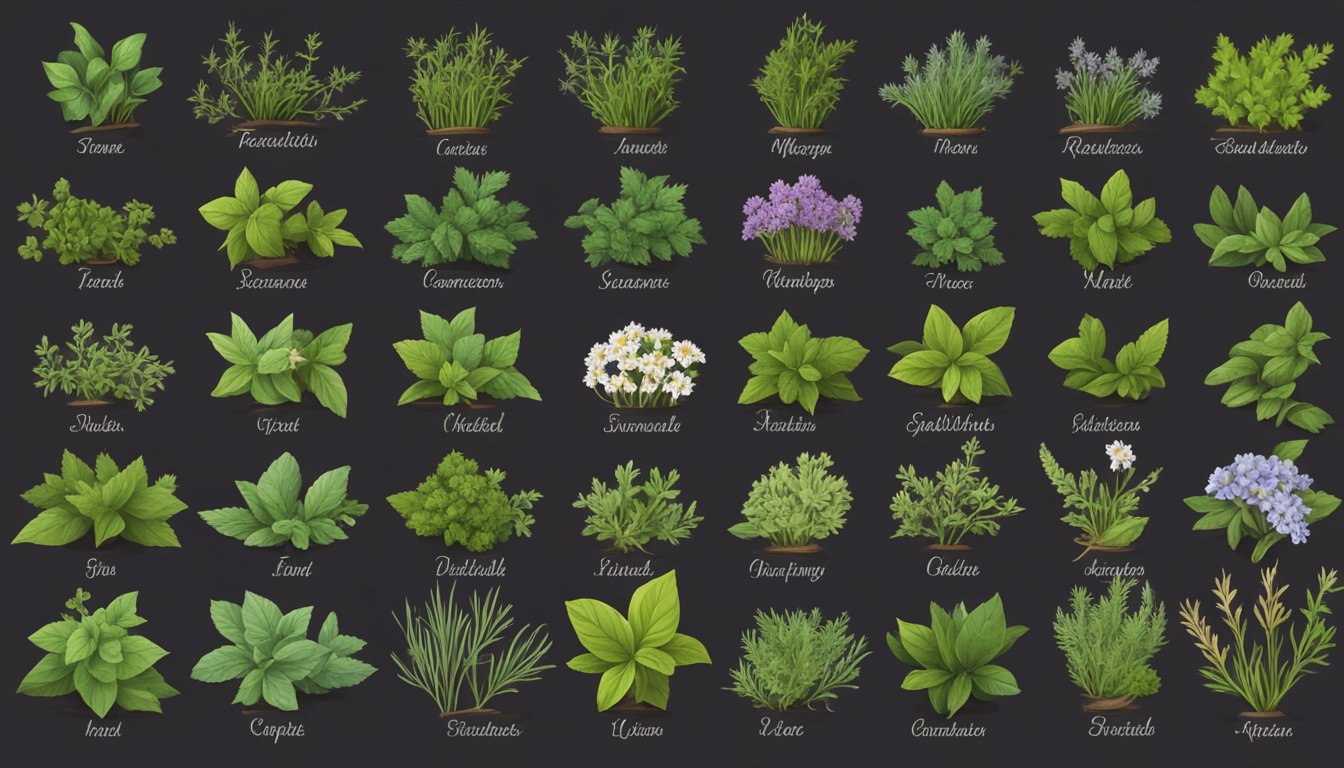
The identification of herbs is a crucial step in ensuring the safety and effectiveness of herbal-related products. Traditional methods of identification, such as morphological and chemical analysis, have limitations and can lead to misidentification. However, modern techniques such as DNA barcoding and spectroscopy have proven to be reliable and accurate methods of herb identification.
DNA barcoding has become an essential tool in herbal medicine, enabling safety and innovation in the field. It allows for the rapid and accurate identification of plant species, which is essential in ensuring the quality and safety of herbal products. Multiple barcodes are needed to guarantee accurate identification, and conventional DNA barcodes with high accuracy are preferred for the purpose.
Spectroscopic techniques, such as near-infrared spectroscopy (NIRS), have also been used for the identification and quality control of herbs and herbal products. NIRS has proven to be a fast, non-destructive, and reliable method for the identification and quality control of herbs and herbal products.
The use of modern techniques such as DNA barcoding and spectroscopy has revolutionized the identification and quality control of herbs and herbal products. These techniques provide reliable and accurate results, ensuring the safety and effectiveness of herbal-related products.
Linking Herb Identification with TheHerbProf.com
Herb Identification and TheHerbProf.com are like a perfect herbal tea blend! Let’s see how they enhance each other.
First, let’s talk about Herb Identification. It’s an exciting journey into the world of herbs. It’s about recognizing the unique characteristics of each herb, their scent, their texture, and their color.
Now, let’s turn to TheHerbProf.com. This website is a library of herbal knowledge. It’s the perfect place to learn about the properties and uses of the herbs you’re identifying.
So, how do they help each other? Well, Herb Identification gives you a hands-on experience with herbs. Meanwhile, TheHerbProf.com provides the knowledge you need to understand the significance of these herbs.
In short, they’re a perfect match! So, start identifying herbs and deepen your herbal knowledge at TheHerbProf.com. It’s a fun and educational journey you won’t want to miss!
References – Herb Identification
Little Herb Encyclopedia, by Jack Ritchason; N.D., Woodland Publishing Incorporated, 1995
The Ultimate Healing System, Course Manual, Copyright 1985, Don Lepore
Planetary Herbology, Michael Tierra, C.A., N.D., Lotus Press, 1988
Handbook of Medicinal Herbs, by James A. Duke, Pub. CRP Second Edition 2007
The Complete Medicinal Herbal, by Penelope Ody, Published by Dorling Kindersley
Check the Following Articles!
Herb for Hot Flashes: Remedies for Menopausal Symptoms
Drying Herbs in Oven: A Simple and Effective Method
Herb Infuser: The Ultra Guide to Choosing the Best Option
Frequently Asked Questions – Herb Identification
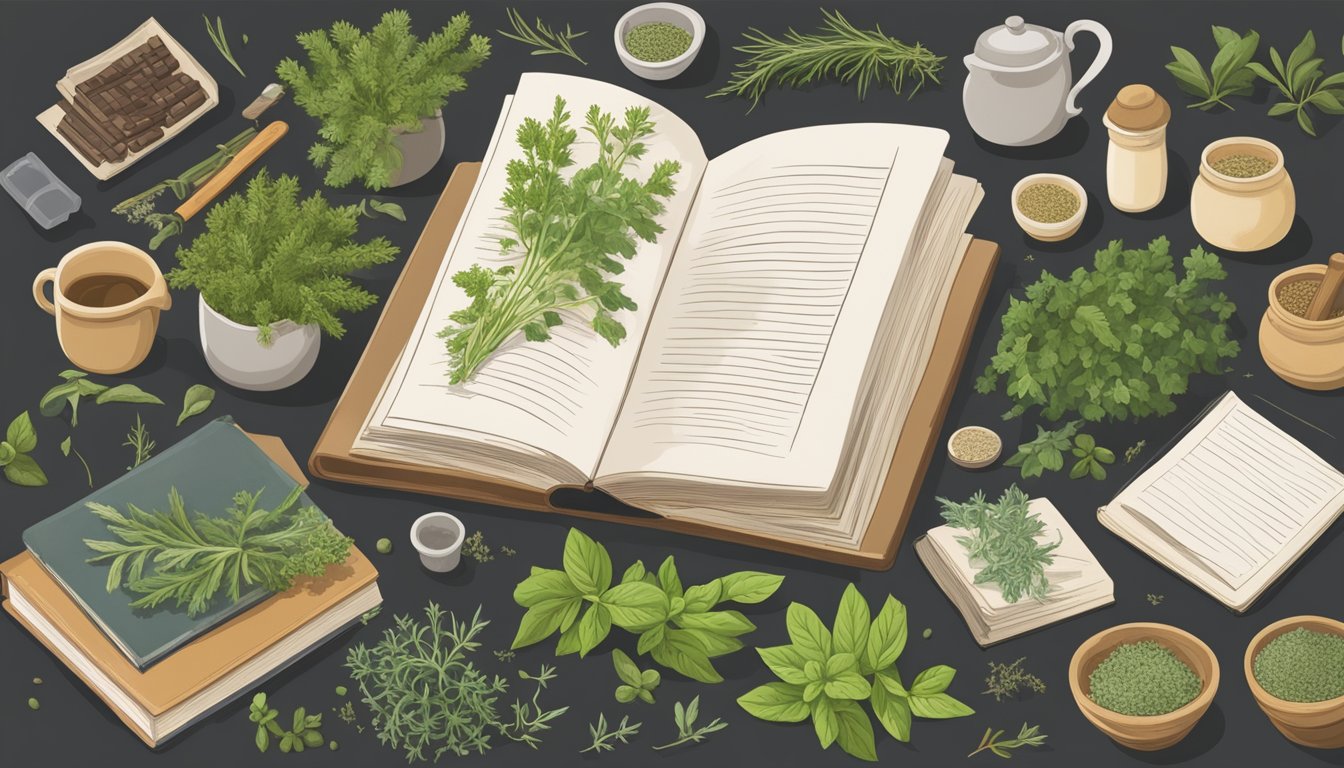
What are some common methods to identify herbs?
There are several methods to identify herbs. One common method is to observe the plant’s physical characteristics, such as the shape and color of the leaves, flowers, and stems. Another method is to smell or taste the plant to identify its aroma or flavor. Additionally, you can use a field guide or online resource to compare the plant to pictures and descriptions of known herbs.
What are the best resources for herb identification?
Some of the best resources for herb identification include field guides, online databases, and educational websites. Field guides provide detailed descriptions and images of plants found in specific regions. Online databases, such as the USDA Plants Database, offer a vast collection of information on plants, including their scientific names, habitats, and physical characteristics. Educational websites, such as the Herb Society of America, provide a wealth of information on herbs, including their history, uses, and identification.
Can you recommend a reliable herb identification app?
Yes, there are several reliable herb identification apps available. One popular app is PlantSnap, which uses image recognition technology to identify plants and provide information on their characteristics and uses. Another app is iNaturalist, which allows users to upload photos of plants and receive help from a community of experts to identify them.
What are the most important characteristics to look for when Herb Identification?
The most important characteristics to look for when identifying herbs include the shape and color of the leaves, flowers, and stems, as well as the plant’s aroma and taste. Additionally, it is important to consider the plant’s habitat, growing conditions, and seasonality, as these factors can help narrow down the possible species.
What are some tips for medicinal Herb Identification?
When identifying medicinal herbs, it is important to consider their traditional uses and the active compounds that contribute to their medicinal properties. Look for herbs that have a long history of use in traditional medicine, and research their documented effects on the body. Additionally, consult with a trained herbalist or healthcare practitioner to ensure safe and effective use of medicinal herbs.
What are some herbs that look similar to each other and how can I tell them apart?
Some herbs that look similar to each other include parsley and cilantro, mint and oregano, and rosemary and lavender. To tell them apart, look for differences in their leaf shape, color, and texture, as well as their aroma and taste. Additionally, consider the plant’s growing conditions and habitat, as well as its seasonality, to help narrow down the possible species.
